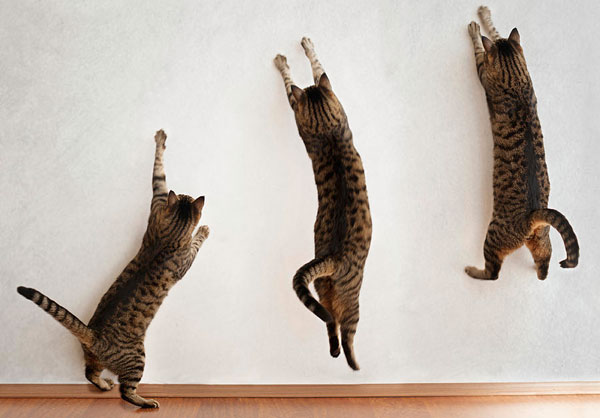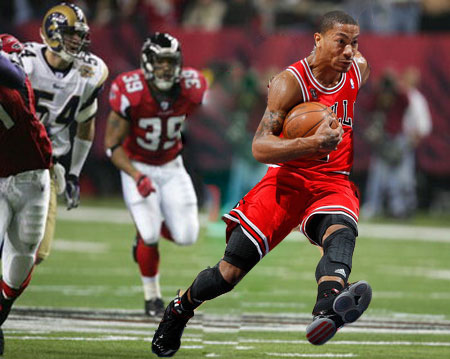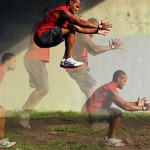
Like any sporting activity, an effective vertical jump is the result of a combination of physical power and the correct technique. Both of these factors have their relevance in the outcome of trying to achieve a higher jump.
But first, let’s begin with something that people tend to forget when starting their quest to improve their jump…
Mindset
Before we start going into detail, it must be mentioned that the right mindset has to be in place if you’re going to achieve more air time.
Your determination is going to determine just how far you’re going to apply and pursue the exercises necessary to reach your goal.

Being willing to spend enough time on applying these methods (4-5 times a week) is essential if you’re to see any decent results. Just dabbling in training will not do.
And if you’re thinking: “what the heck is this guy talking about? the mind has nothing to do with jumping higher.”
Well, you couldn’t be more wrong.
I suggest you download this free pdf from Vert Shock and read the last chapter that talks about what sets the pros from the amateurs. It will make you rethink about things and appreciate the power of the mind.
So now that we got that out of the way, here are the concepts of what has to be done.
Building Strength
Developing the correct muscles that help propel you in the air is like putting the right engine in a car.
In vertical jump training the #1 goal to aim for is to strengthen your legs and core muscles.
The way you can achieve this is by doing exercises like squats, deadlifts, calf raises, calf raises with weights, stomach crunches and knee flexions.
It must also be noted that running and jumping are closely related in terms of performance.
If you work on running faster, your vertical jump will increase, improving your explosiveness through plyometrics.
I’ve learned this fact from this program, and it perfectly correlates with why players like Rose, who are super fast on the court, can easily jump over 40 inches.

This is to say, focusing on anaerobic energy system which utilizes the ATP stored in the muscle to create energy which only lasts for about 10 seconds, more than enough for a sprint and a high jump.
The reason we work on this is to increase the power we’re able to produce in this time frame and to increase the time we can use it as well as to reduce the time it takes us to get from 0% to 100%.
In other words, focus on sprints and strengthen your legs and core body.
Technique
Bruce Lee was able to send a man flying backwards with a punch that started barely an inch away.
Was this because he had superhuman strength?
No.
He had technique on his side.
While there is no denying that Bruce Lee was exemplar in his fitness, a feat like this was merely a manifestation of correctly implemented technique – the coordinated movement of every element of his body that contributed to transferring all the available energy of the body into one objective.

This very same concept is true to vertical jumping.
You want all the muscles in your body to act in the correct order with the correct timing.
Pretty much, the sequence is as follows:
Start with your body in a bent position: hips at 30 degrees, knees at 60 degrees and ankles at 25 degrees. This is extremely hard to achieve without external observation such as a coach or a video recording to analyze immediately after the attempt. What you want to simulate is a compressed spring.
From this position you want the whole body to explode upwards, starting with the arms which swing from just behind the back all the way up in an arc.
As the arms start going vertically, your body should start to rise and straighten up, being almost completely stretched just before the legs are fully extended and pushing down.
The idea is that all the body parts that do not contribute to pushing you up in the air are used to create upwards inertia. During this whole process which is a fraction of a second, you want to exhale forcefully in the same way that you would when lifting weights.
In order to get another few percent of dynamic energy into your jump you can take one or two steps before the jump as this horizontal kinetic energy will translate into vertical inertia through the arms. This is why running verticals and one-step vertical are usually higher than a standing vertical.
Since usually most of the dunks in basketball occur off the run or with some kind of momentum, it’s equally important to maximize the forward momentum into an upward motion.
This transfer from horizontal to vertical happens mostly during the penultimate step (the last stride before the jump) and in order to better utilize the forward momentum you need to work on the penultimate step technique.
I found this recent video of Jacob Hiller explaining how to perform this step right and how it can increase your vert a few inches literally instantaneously.
References
1) Philosophies on Increasing Vertical Jump Skill and Power – Freelap USA – https://www.freelapusa.com/7-philosophies-on-increasing-vertical-jump-skill-and-power/
2) Increase Vertical Jump Power With Weight Training And Plyometrics – Sports Fitness Advisor – http://www.sport-fitness-advisor.com/increaseverticaljump.html





